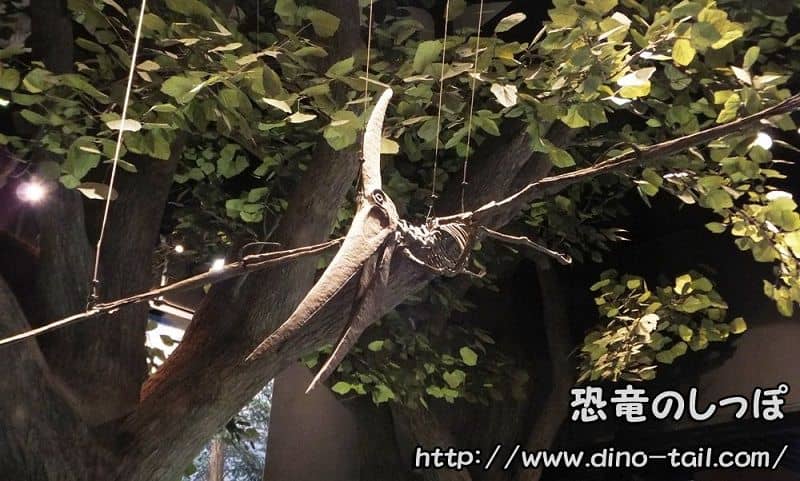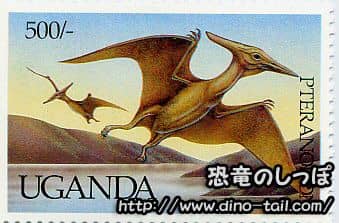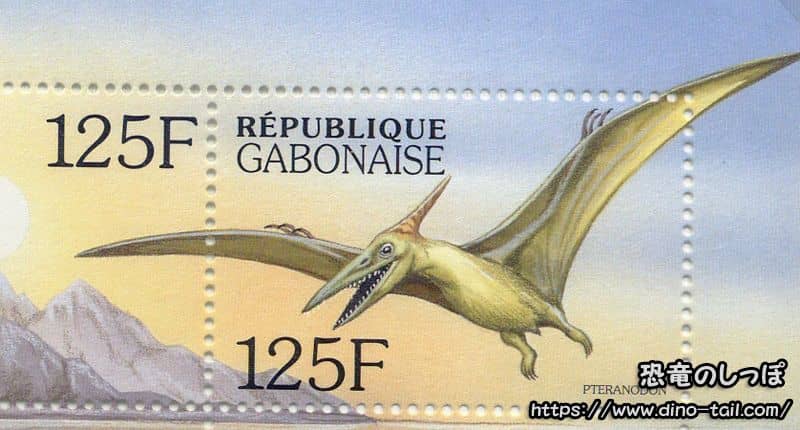About Pteranodon (Pterosaur)
| Scientific Name (Genus) | Pteranodon |
| Meaning of Name |
Wing without teeth
pteron (wing) [Greek] - an (without) [Greek] - odon (tooth) [Greek] |
| Classification | Pterosauria, Pterodactyloidea, Pteranodontidae |
| Wingspan | Approx. 7 - 9m |
| Diet | Piscivorous |
| Period | Late Cretaceous (approx. 89.3 - 74 million years ago) |
| Sub-classification / Species Name |
Pteranodon longiceps
(Type species)
* P. sternbergi , once considered in the same genus, is now often classified as a separate genus, Geosternbergia . |
| Year of Paper Publication | 1876 |
| Type Specimen Publication |
"Notice of a new sub-order of Pterosauria".
American Journal of Science. Series 3. by Marsh, O.C. 1876. |
Features
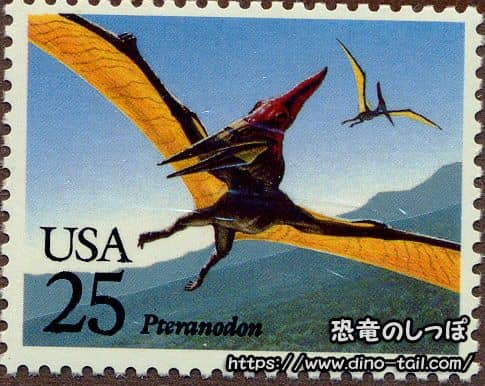
Pteranodon is not a dinosaur, but a reptile highly adapted for flight, classified as a "pterosaur" .
Its most distinctive feature is the long crest on the back of its head. Theories about its role include that it "developed to balance the beak during flight" or that it was for "display to attract mates."
It seems to have glided on the air like a glider rather than flapping its wings.
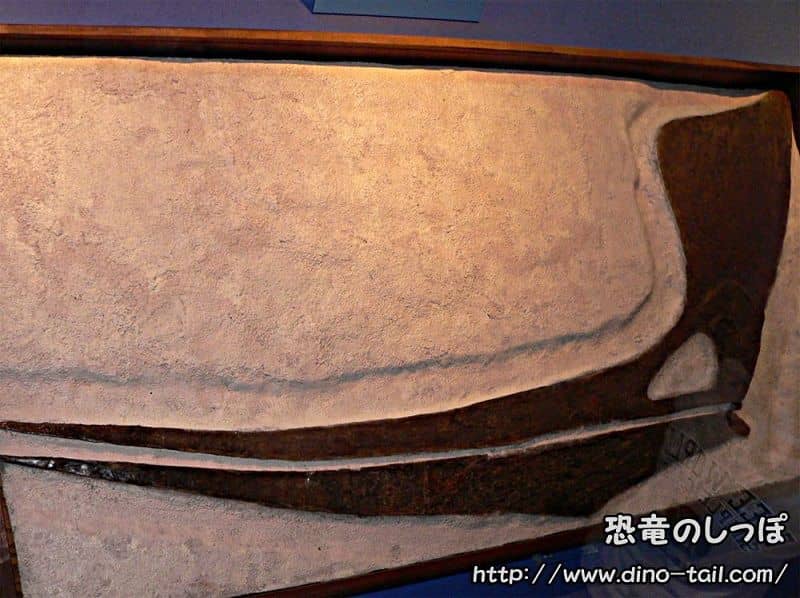
Although often depicted alongside dinosaurs, Pteranodon is not a dinosaur but a representative pterosaur. It lived in North America during the Late Cretaceous (about 89.3 to 74 million years ago). It is a representative genus of pterosaurs that often appears in encyclopedias and movies.
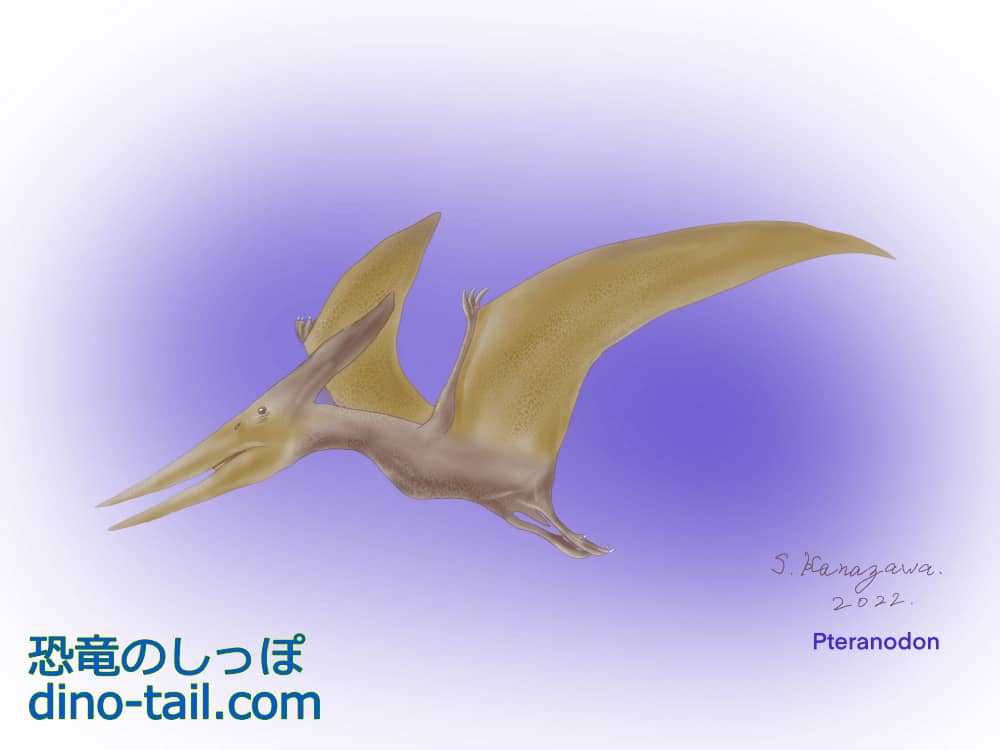
The wing of a pterosaur is supported by a single elongated ring finger (the fourth digit) of the forelimb. The thumb, index, and middle fingers are outside the wing. There is no little finger.
When on the ground, Pteranodon moved on all fours, with the fingers of its wings on the ground, rather than on two legs. And to take off, instead of running like a bird, it is thought to have performed a "quadrupedal launch," using the power of its very strong forelimbs (arms) to launch its body from the ground at once. This allowed it to take off instantly even from a flat surface.
Dramatic Differences Between Males and Females
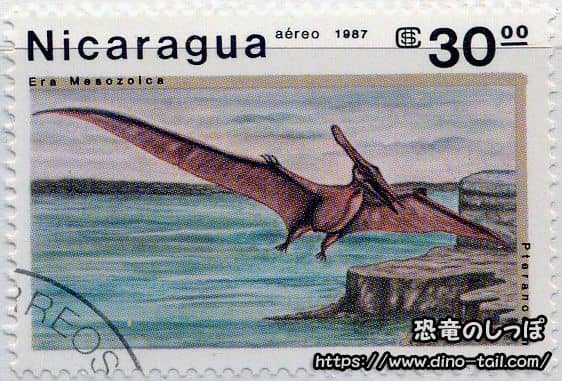
Pteranodon fossils are found in two distinctly different sizes, which is now considered certain to be a difference between males and females ( sexual dimorphism ).
- Males: They had a large build with a wingspan of over 7 meters and a very large, impressive crest on the back of their heads.
- Females: They were much smaller than males, with a wingspan of 3-4 meters, and had a very small crest or almost none at all. However, their pelvis was wider and more robust than that of males, for laying eggs.
This discovery strongly suggests that the male's large crest was not a weapon, but was primarily used as a display to attract females and to make themselves look larger during territorial disputes between males.
Pteranodon Did Not See the Meteorite Impact
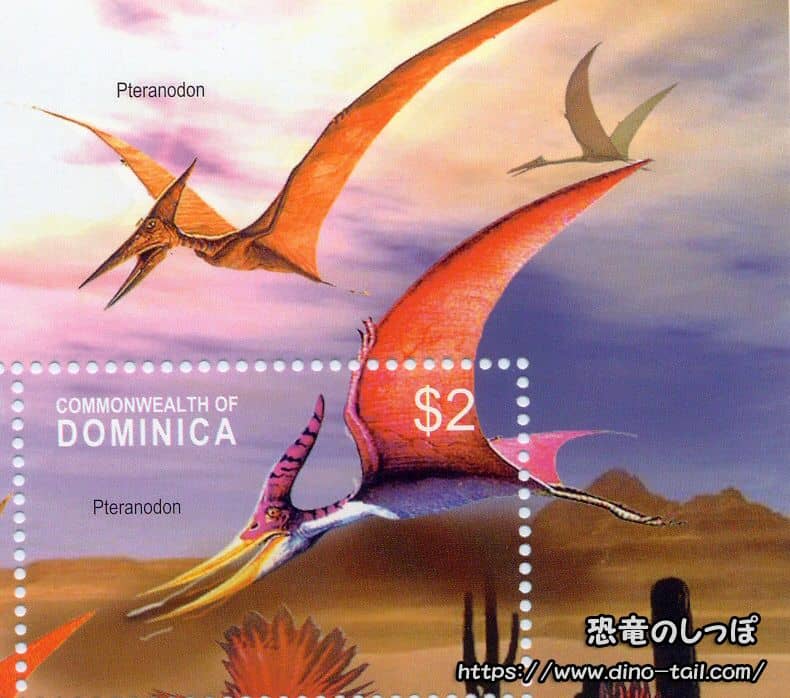
Pteranodon lived in the Late Cretaceous (about 89.3 to 74 million years ago). Although often depicted as living at the same time as Tyrannosaurus and Triceratops in encyclopedias, Tyrannosaurus and Triceratops lived at the end of the Cretaceous (about 68 to 66 million years ago). Their periods of existence did not overlap.
This means that Pteranodon was already extinct before the mass extinction at the end of the Cretaceous, 66 million years ago.
Pteranodon Stamp and Fossil Gallery
